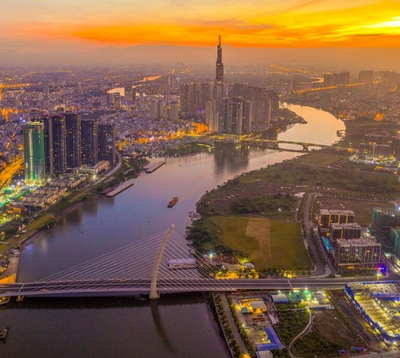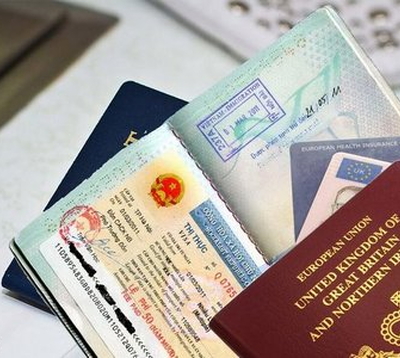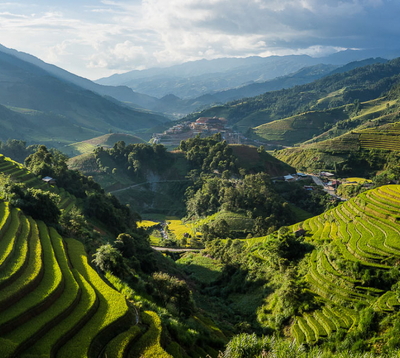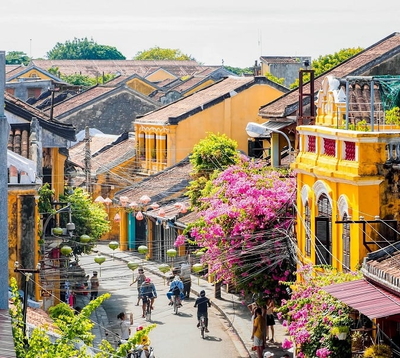Scuba Diving In Vietnam: Culture Tips

Vietnam has long been a favorite haven for tourists all around the world. Visitors swarm here to take in the breathtaking natural charm, exquisite beaches, diverse culture, and delicious cuisine. But a potential-shining-jewel is still being hidden by many coastal communities of this country, the multicolored and varied aquarium world. With its 3260 km of coastline, unspoiled waters, year-round accessibility, and hundreds of different species of marine life, Vietnam has made its name in the scuba diving world.
Scuba diving in Vietnam is typically thought of as an underwater activity. Scuba diving is fundamentally an activity that involves submerging yourself below to observe the beauty and natural world that exist under the ocean. Vietnam is undoubtedly a scuba diving destination that is quickly gaining popularity, even though it may not be the first that comes to mind when you think of this water sporting activity.
When Should Go Scuba Diving?
Though scuba diving in Vietnam sites is open throughout the year, the months between March and October are the best since the currents are more gentle and the better vision ability. Furthermore, weather conditions drastically vary in different areas, therefore it is advisable to check the weather conditions of the diving site you plan to visit well in advance.

Many people think that Vietnam is a place where the country is bathed in tropical sunlight all year round and offers many adventurous things to do. However, the unpredictability of Vietnam's weather is obvious as you can see both sunlight and raindrops in a day. Keeping in touch with GPS is ideal. Besides the formal weather, the islands' conditions are also related to what you need to toss around.
>>> Read more: Best time to visit Vietnam (Travel Guide & Tips 2022)
Equipment Required
You can always hire gears for scuba diving in Vietnam if you are an experienced diver and are aware of what you need. You can go to shops, there isn't a lot, or order online. You can probably get the equipment if you go on tour or where you're diving.
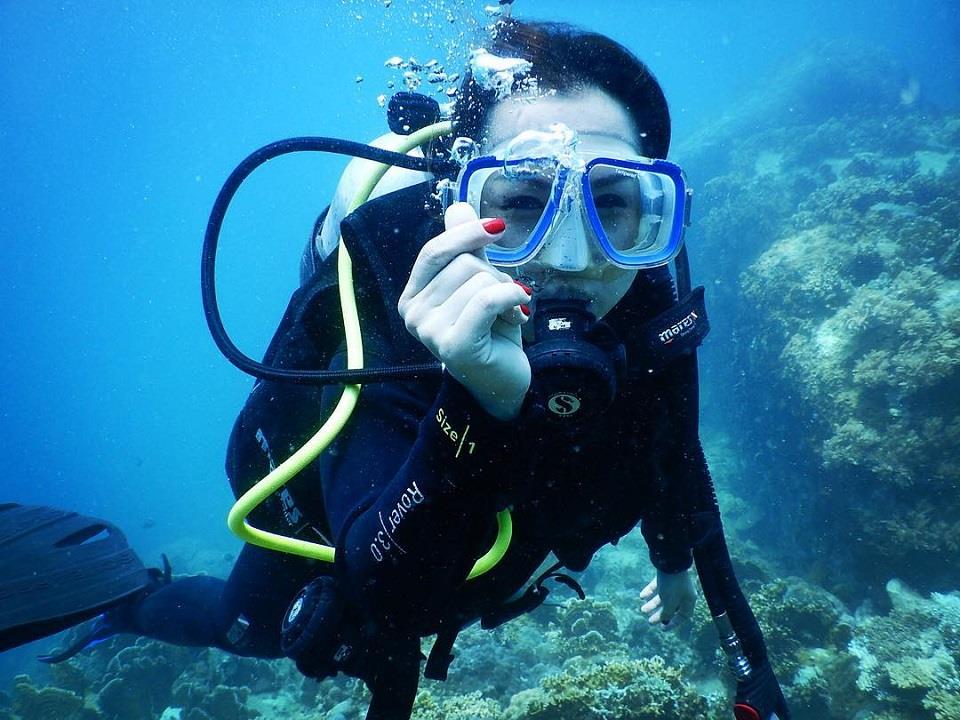
If you need to become accustomed to the equipment, you can sign up for a beginner's diving course. One of the most crucial factors in scuba diving safety for visitors is equipment. You should be aware and able to get the types of equipment required listed below if you want to go diving in Vietnam.
- Goggles: A pair of top-notch swimming goggles will reduce the amount of water that gets into your eyes. Of course, you may swim more easily and avoid germs when your eyes are not vulnerable to the stimulus provided by seawater.
- Wetsuit: This scuba diving equipment keeps you warm and guards against bumps made scratches or bites by aquatic creatures while also giving you a fashionable sense. Depending on the location and your own requirements, you may select kinds for the weather and body dimensions.
- Fins: The fins act as a flexible and fluid motor for the body, allowing you to swim more quickly and farther underwater. Surfing without a propeller also makes it easier to lose strength since your body will be under pressure from the water. An excellent pair of fins will provide the user with comfort as well as the quality of motion.
- Scuba tank: The scuba tank is yet another crucial piece of diving gear. So that you can breathe underwater, it holds a lot of air. Scuba diving tanks typically come in a variety of sizes and shapes and are composed of steel or aluminum. You may rent one or buy one if you want to dive regularly.
- Regulator/snorkel: You can only hold your breath for five minutes without a regulator or snorkel. Thus, a snorkel is a fantastic tool for maintaining your breath when submerged without having to lift your head.
- Depth gauge: The gauge will display how much air is still in your scuba diving tank as well as the current maximum depth that can be reached throughout the dive. To make sure you can stop the plunge before the oxygen supply runs out.
- Some other types of equipment you could get are a dive mask, octo, oxygen regulator, and dive computer, …
- Buoyancy Control Device (BDC): This is optional but better to have. A buoyancy control device (BCD) gives you control in the water. It makes it easier for you to freely float along at the surface, kneel, stand on the bottom, and move about.
Best Dive Sites In Vietnam
Cu Lao Cham Island
The 5000 hectares of coral reefs, drop-offs, tunnels, and rock formations on Cham Island near Hoi An never fail to captivate divers. It consistently ranks among the top destinations for scuba diving in Vietnam. The greatest months to go diving are January through October.
Cu Lao Cham offers diving at a very affordable price that is worth both your money and the experience. You should be careful not to place your foot on the corals since they are extremely shallow. You may reserve scuba diving on most excursions to Cham Island at any travel agency or by asking the hotel where you are staying.
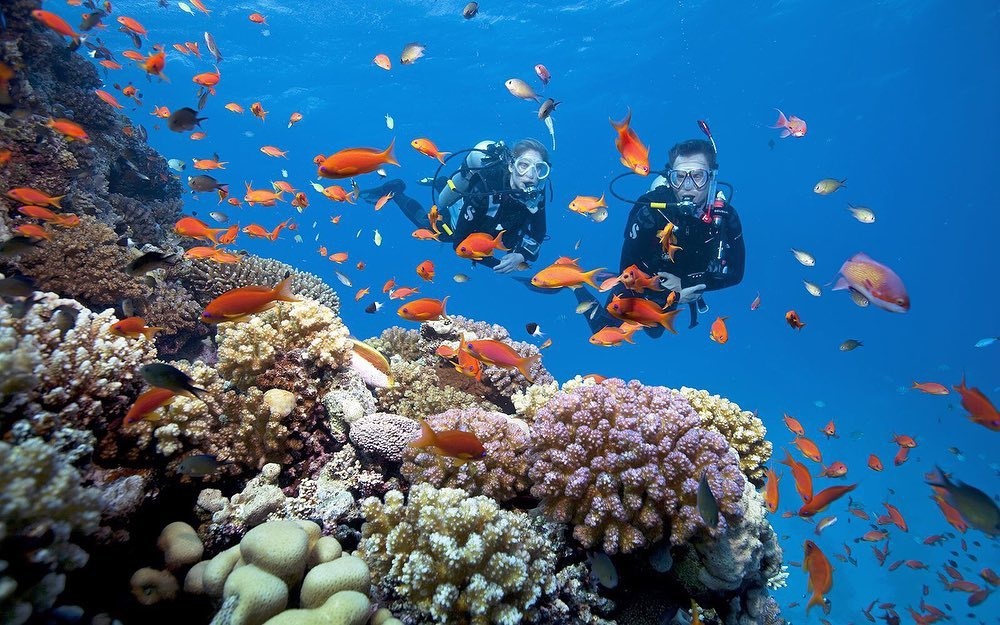
The pre-learning course that accommodates divers of all skill levels is one of this location's unique features. You will learn the fundamentals of scuba diving in two hours. By diving 5 to 7 meters beneath the surface, you may discover the captivating beauty of this ocean and view a variety of rare marine life. 500 hectares of seagrass beds and 165 hectares of coral reefs may be found on Cham Island. This diving in Vietnam location has additional appeal because of the 200 kinds of fish that are present. There is little doubt that scuba diving at Cham Island is a must-try activity.
Madonna Rock
The underwater playground and spectacular tunnels and caverns of Madonna Rock in Nha Trang make it one of the most fascinating locations for scuba diving in Vietnam. The two huge triangular-shaped rocks beneath the waves, as well as the hard and soft corals, add to the splendor of the underwater landscape. All abilities of divers may enjoy a dive at Madonna Rock, which has an average depth of 25 meters (82 feet).
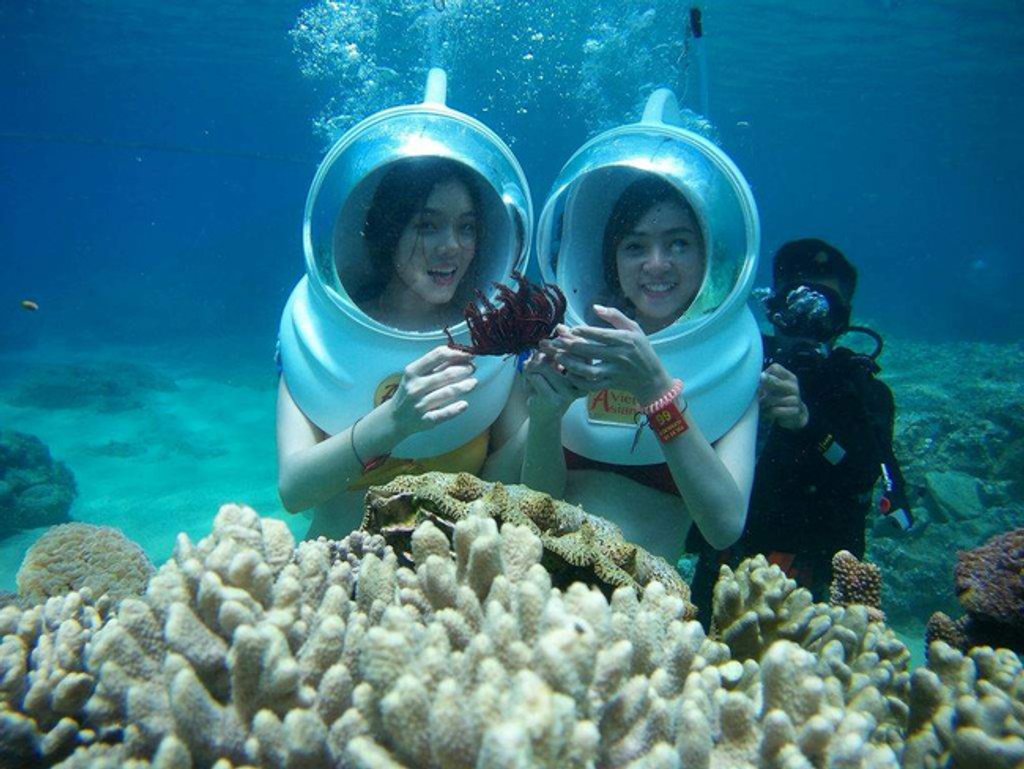
For deep and buoyancy dives, it is perfect. You may see miniature glassfish, elaborate ghostfish, flatworms, octopus, surgeonfish, lionfish, moray eels, unicornfish, and cobia rays hiding inside the caverns while swimming among the rocks, caves, and tunnels. Arrive between July and August.
Ho Trau Nam
Ho Trau Nam, which is located on Whale Island in Van Ninh, Khanh Hoa, is another well-liked scuba diving in Vietnam location. It is also known as Three King Island because it has three peaks that emerge from the ocean's depths and breach the surface. This location's seafloor is also highly intricate.
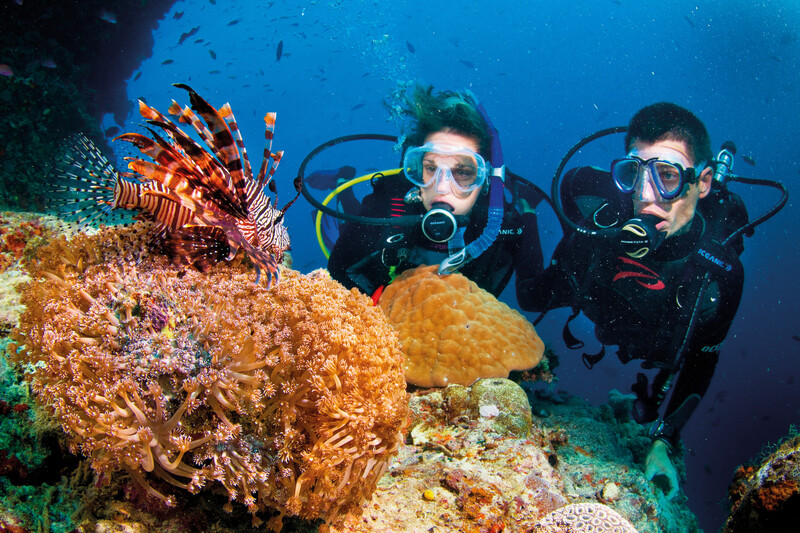
A complex labyrinthine network of underwater flora is formed by the yellow, white, and purple corals that cover the bottom, making it the ideal backdrop for photographers. The rays that frequent Ho Trau Nam is well-known. Eagle rays, stingrays, and manta rays all swim through the water with ease. Divers are exposed to some strange but quite beautiful sea slugs as they descend further into the reef. The best time for diving is in April and July.
White Rock, which is yet another excellent location for scuba diving in Vietnam, is located a bit further out from Whale Island's main scenery. Huge rays are abundant at this location. The diving depth is around 40 meters. In addition to manta and stingrays, the presence of whales and sharks enhances your amazing scuba diving in Vietnam experience.
Hon Kho
Hon Kho is sometimes referred to as "Dry Island" since it lacks vegetation. October through April is the best period for inexperienced divers to visit. The ideal circumstances for beginning divers may be found in these waters since they are clean and quiet and are shielded from the powerful currents that impact other parts of the island.
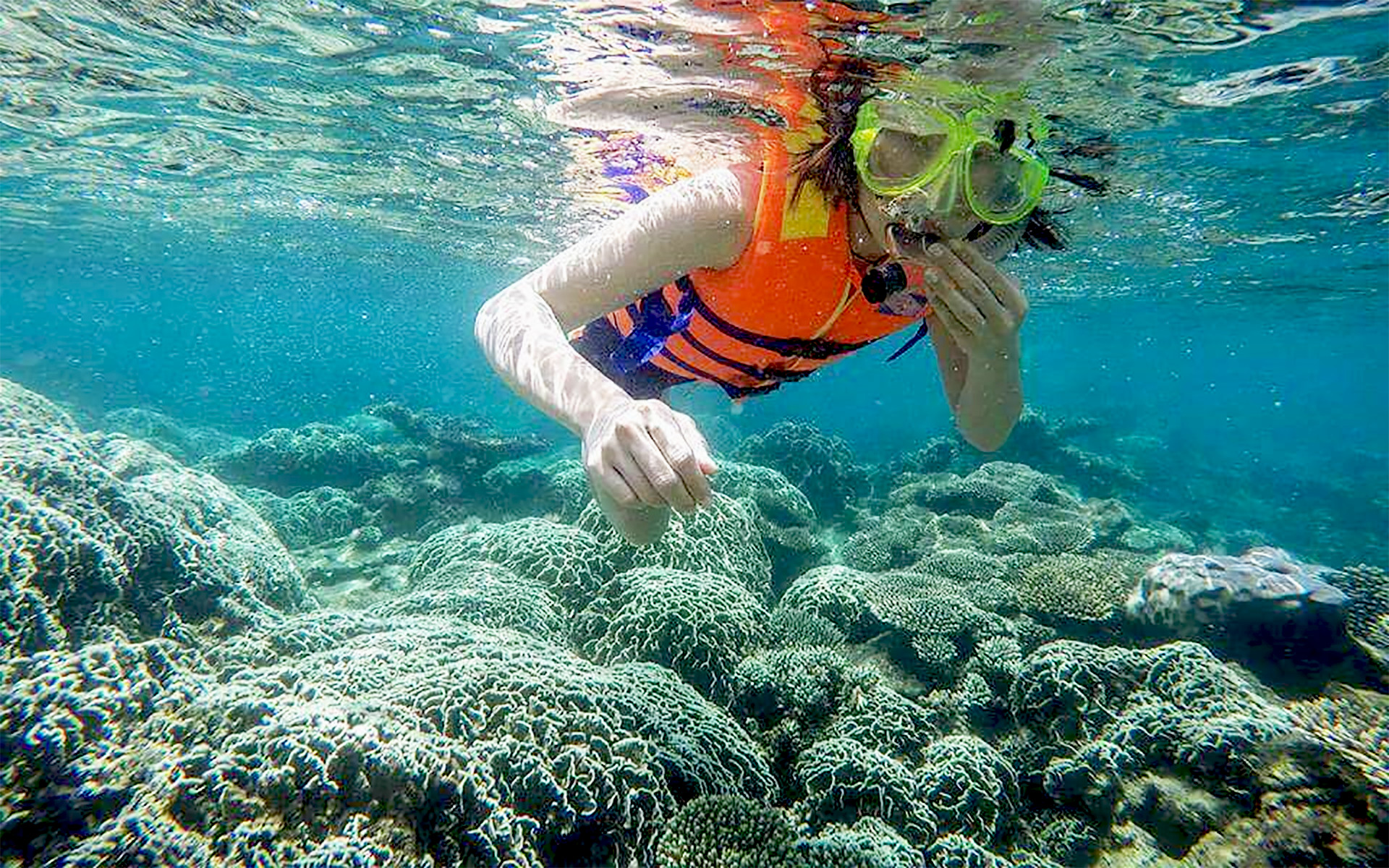
Don't be fooled if you notice some rocks breaching the surface. It pales in comparison to the intricate seabed below, which is home to a variety of marine life, including catfish, miter shells, rays, bamboo sharks, nudibranchs, catfish, and scorpionfish. Also seen here are butterflyfish and parrotfish feeding. Simply put, the stunning hard corals are bursting with life. Don't forget to try this place if the chance comes.
Con Dao Island
Con Dao is regarded as having Vietnam's most spectacular coral reef. The Con Dao Islands' clear waters are home to a wide variety of unusual marine life, including turtles, Moorish idols, barracuda, moray eels, stonefish, and many more. However, because of the bad weather, this area frequently becomes inaccessible.

It is advisable that you start by looking at the weather prediction. March through September is the ideal time of year. When it comes to scuba diving in Vietnam, the Con Dao Islands are one of the less exploited regions, yet this is nothing bad.
The underwater wonder of this location is beautiful and pristine, distant from the hubbub of humans. There are about 20 diving spots in the area, all with varying difficulty. Its biodiversity is what makes it most famous. The region is home to more than 1,300 different types of marine life. Despite the extra work required, those who make the expedition are rewarded with some of the most pleasant scuba diving in Vietnam experiences.
>>> Read more: Vietnam and Leisure in Con Dao Island 21 Days
Local Tips When Diving in Vietnam
Diving in Vietnam is a truly unique experience. The country is home to some of the most beautiful and diverse underwater scenery in the world. However, there are a few things to keep in mind when diving.
- Dive together in groups to assist one another if needed. While diving, you can't always keep everything under control and handle yourself. You have a good likelihood of dying if no one can assist you in an emergency condition like seasickness, cramps, or a heart attack.
- Comply with the rules and instructions of the tour guide. It's important to pay attention at all times even if you've done scuba diving before because every dive site has a different atmosphere. Maintain a modest manner and get along with the other employees.
- Stay near the ship's anchored position and in the supposed area. If you swim too far from the assistants on board, nothing can guarantee your survival. The best thing to do is to always swim in the region while being supervised by professionals, who are often informed before you dive.
- Remain in the presumed region and close to where the ship is stationed. Nothing can ensure your survival if you swim too far away from the onboard helpers. The best course of action is to always swim in the area under the supervision of experts, who are often notified before you dive.
- Avoid drinking. Alcohol might heighten your feelings and lessen your fear of water, but it also accelerates the rate at which your body loses water. It results in serious problems under greater pressure.
- As a matter of good practice, you should refrain from touching anything (apart from the aforementioned rock) in order to preserve the coral reefs as well as your own safety. Many ocean plants and animals are toxic, and many corals are spiky.
- Verify your diving readiness and healthiness. You need to have a medical examination at home. You should exercise and stretch.
- Breathe normally and never hold your breath. Holding your breath increases the risk of an air embolism, a serious and perhaps deadly injury where an air bubble enters circulation.
- Pay close attention to your air gauge. You can only stay below the surface for as long as you have air in your tank, therefore you must be mindful of when it is halfway and quarter filled in order to schedule your ascent to the surface.
- Try not to overwork yourself. Don’t go at a rate that exhausts you. You'll see more if you go more slowly.
- Let people know if you feel off.
Conclusion
Have no idea where to go? Want to try scuba diving in splendid views that few have tried before? Then consider Vietnam as your new dream. This little place has huge potential to become your scuba diving destination. No more hesitation, get in touch with us right away to reserve your diving and Vietnam expedition.
Reviews








